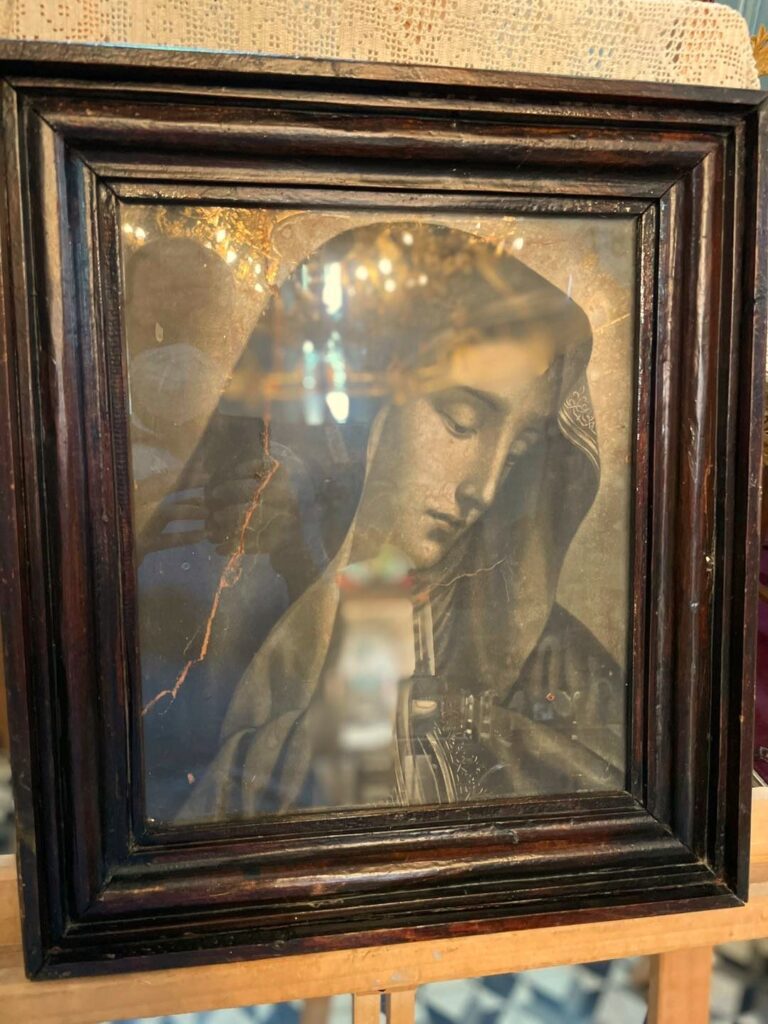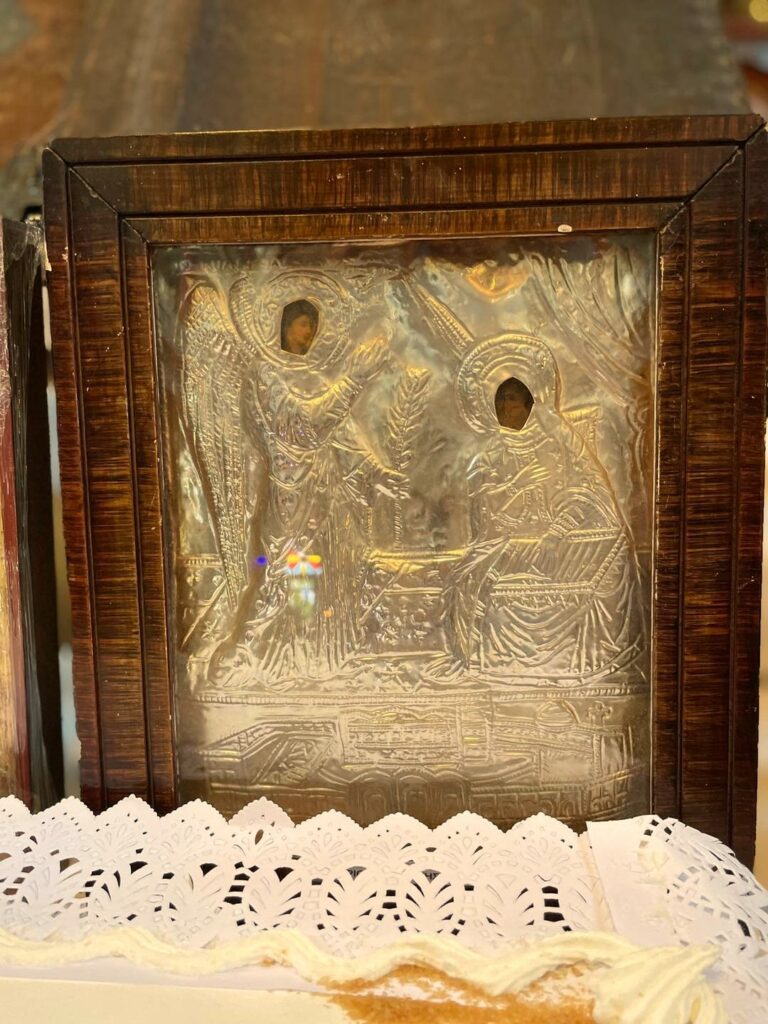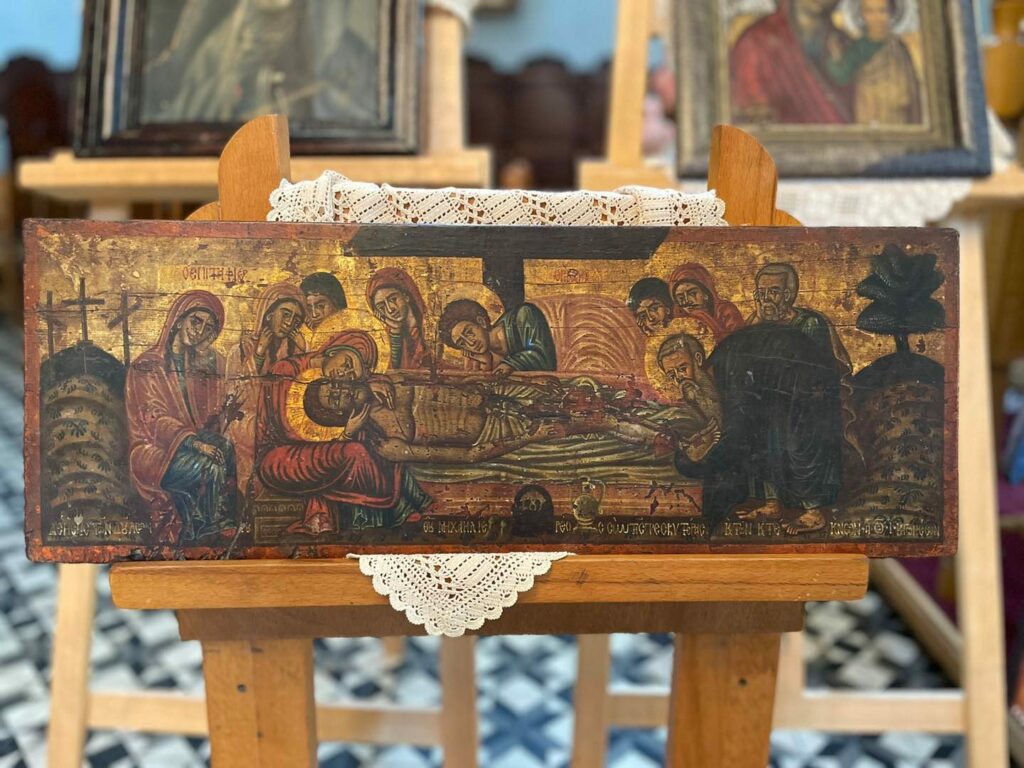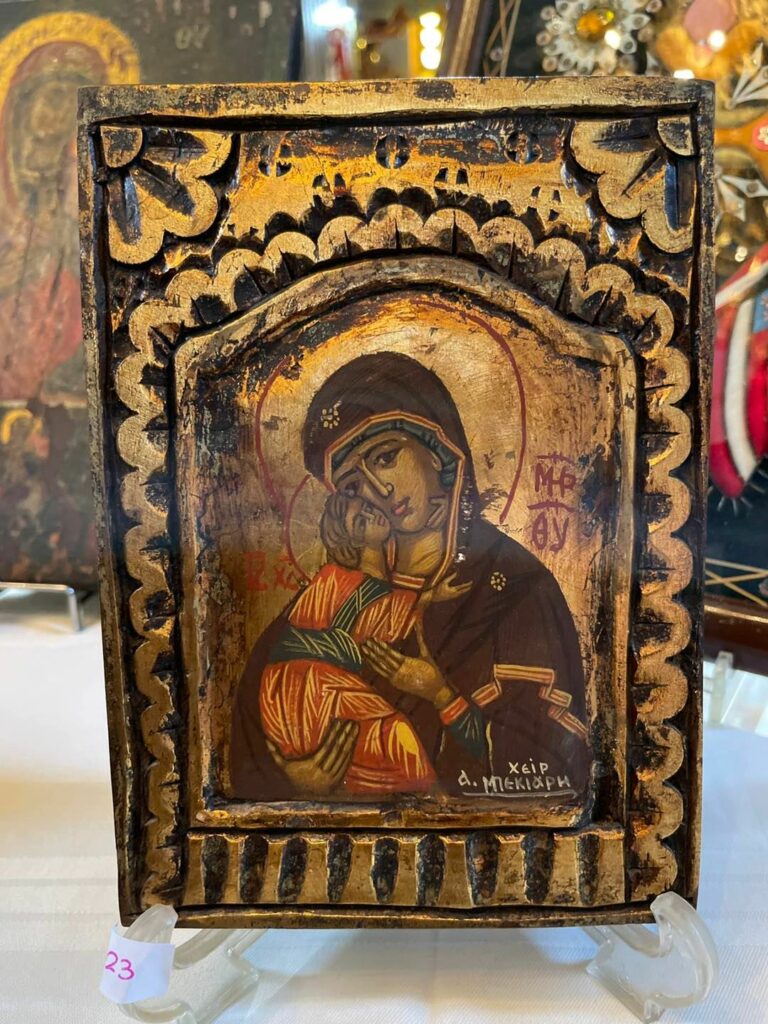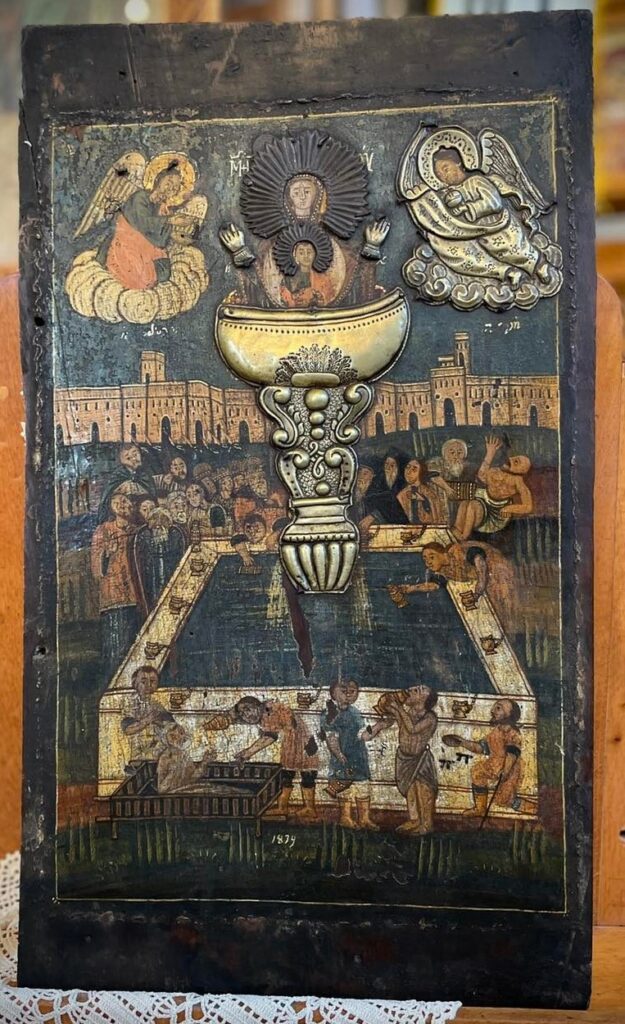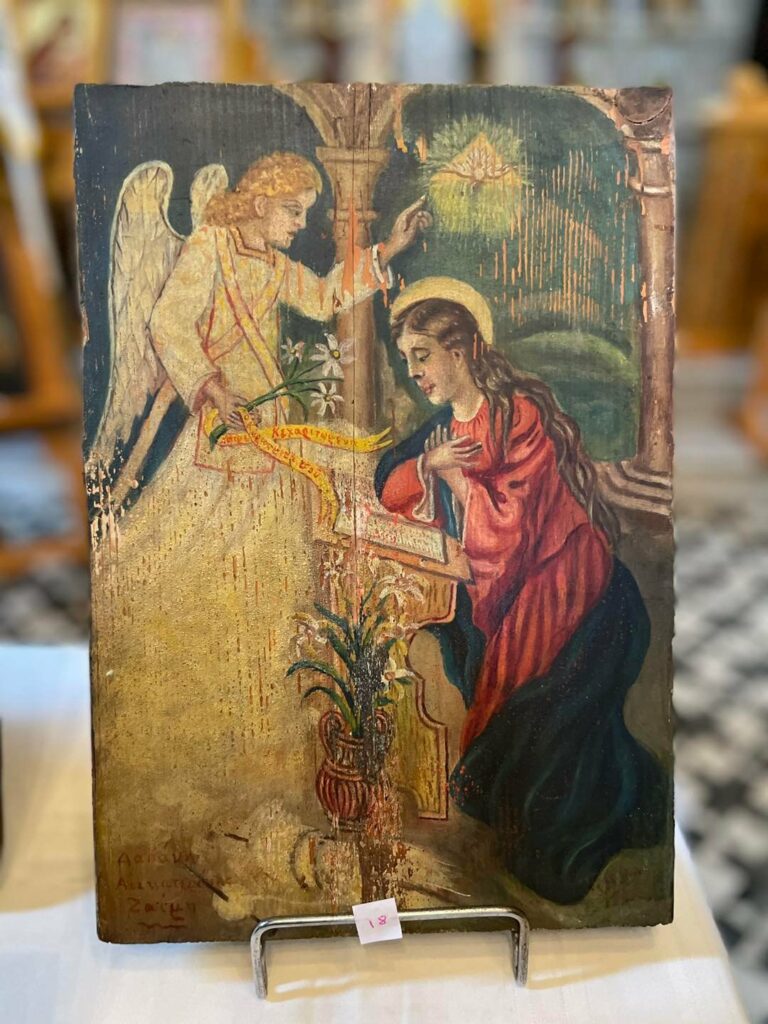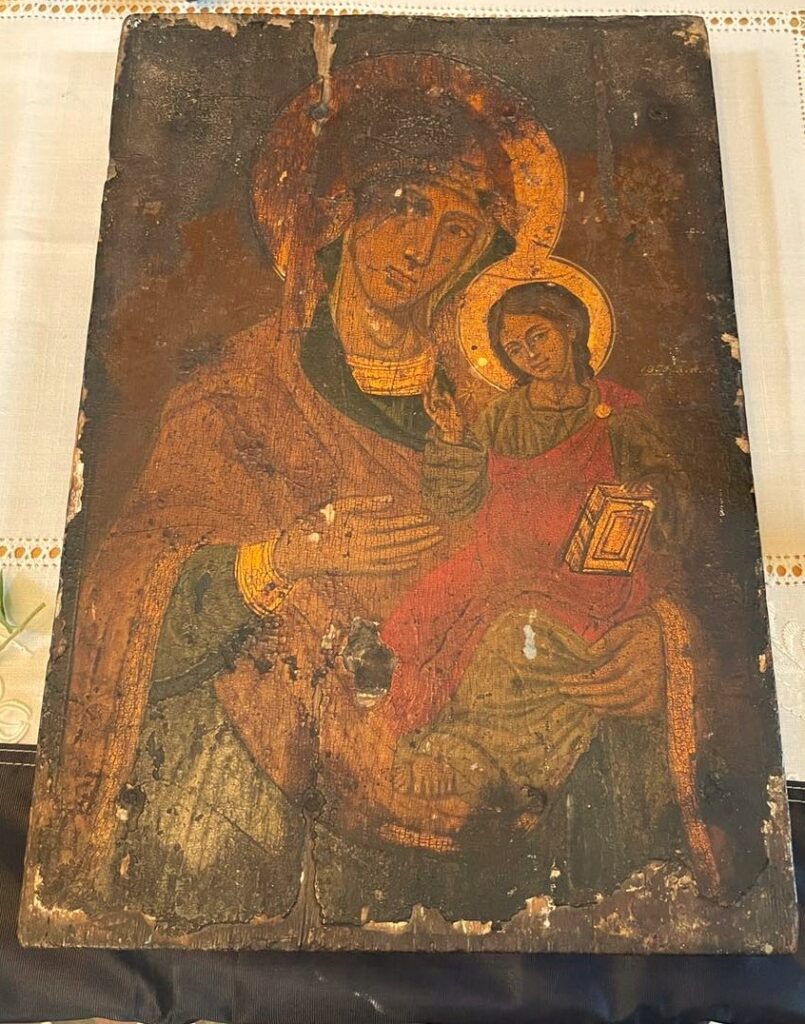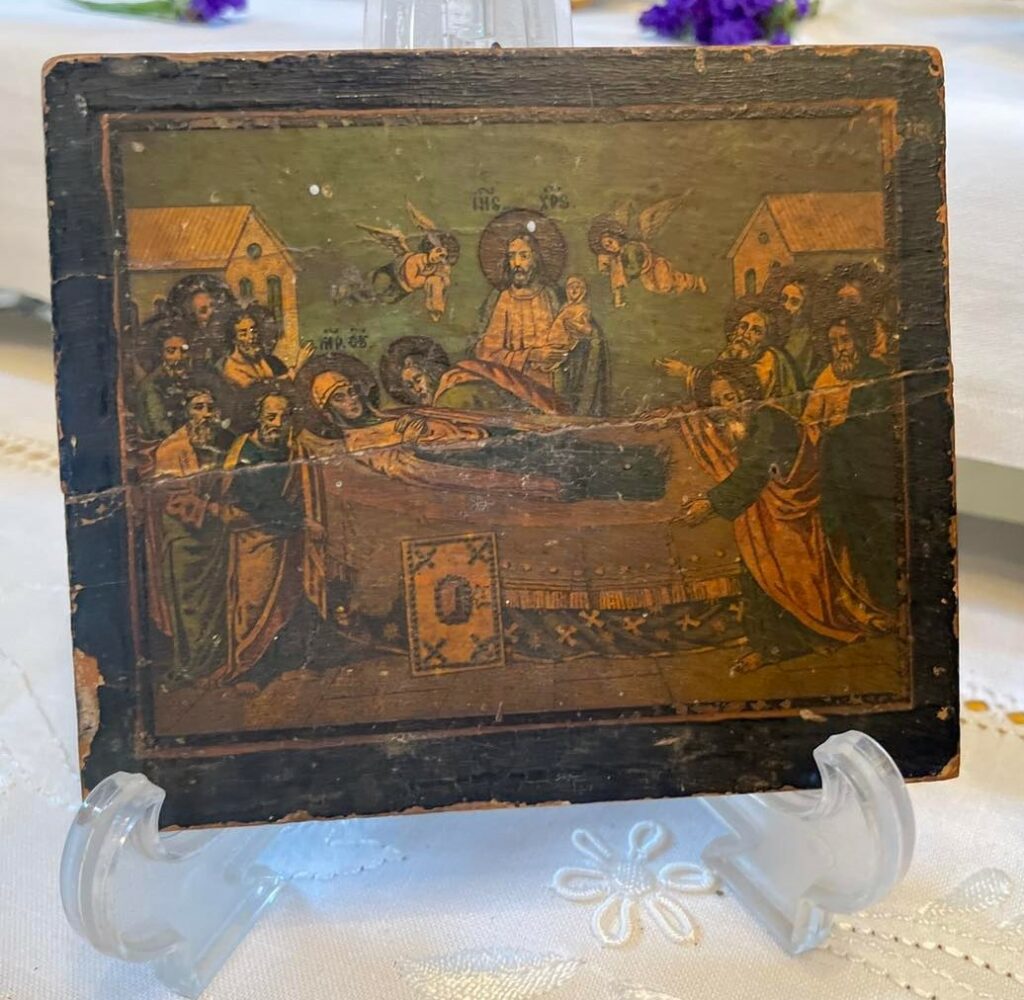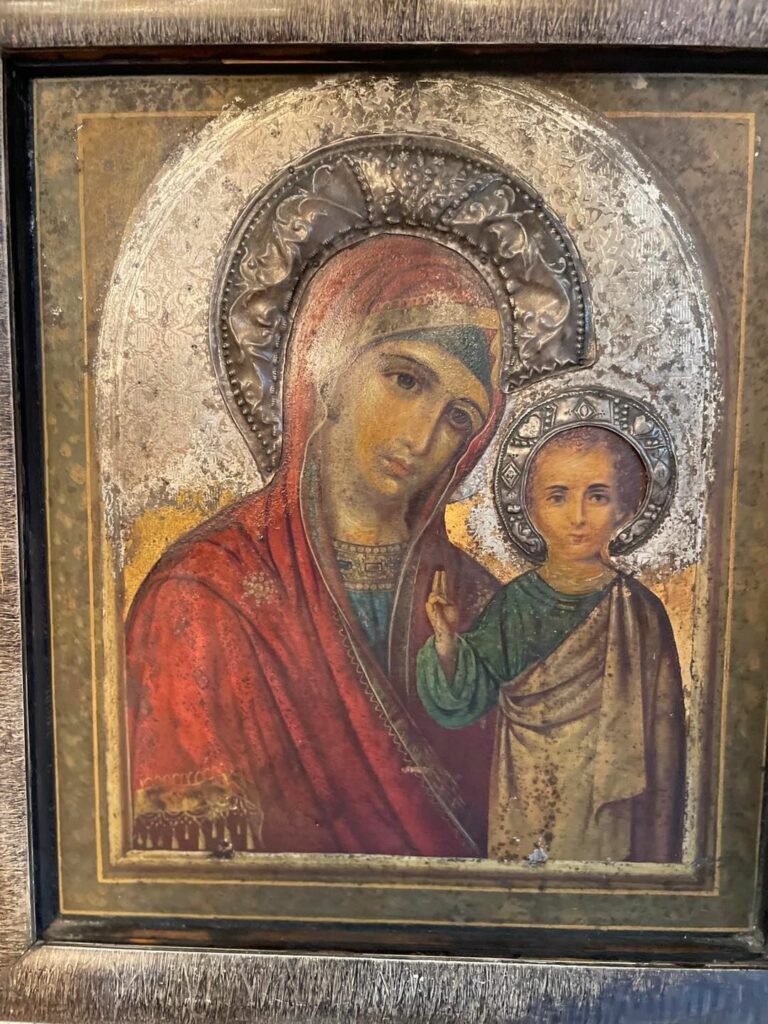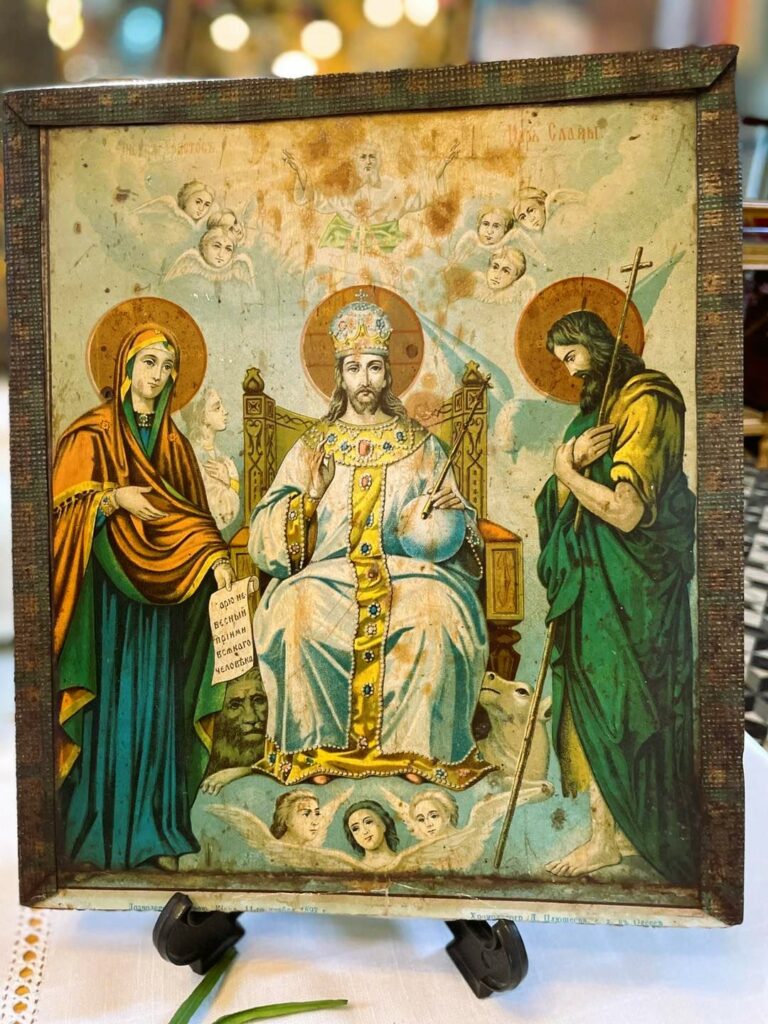Holding baby Jesus, showing tenderness and mercy, being blessed and full of grace, giving life, mourning, praying; these are just some of the iterations of the Virgin Mary, the ‘Mother of God’, in the Orthodox tradition and art.
As descendants of refugee families, the members of the ‘Agios Polykarpos’ Brotherhood of Asia Minor Greeks of Chania are responsible for the preservation of the icons their Asia Minor ancestors brought with them. They consider them ‘heirlooms which connect them with Asia Minor’, says the chairwoman of the Brotherhood, Stella Gozani-Charitaki, ‘a warm embrace our ancestors found refuge in throughout their lives’.
Most of the icons these refugees brought with them depict the Virgin Mary. Following the familiar social pattern of viewing mothers as protectors, the Virgin Mary is characterised, depicted and perceived by devout Christians as a nurturing and protective mother figure who can empathise with the feelings of pain, injustice and persecution experienced by people. Mary is honored by Islam as well and is called Maryam in the Quran. Memoirs about life in Asia Minor describe how Muslims participated in celebrations honouring not only the Virgin Mary, but also Agios Georgios and Elias the Prophet.
The refugees who settled in Chania brought with them a treasure trove of religious icons. They depict an array of saints, scenes from Jesus’ life and many iterations of the Virgin Mary which offered solace during the refugees’ long journey of displacement. Among them are versions of the Dormition of the Mother of God, Virgin Mary holding baby Jesus, depictions of the Immaculate Conception, Virgin Mary as the life-giving fountain, Virgin Mary mourning, and images of her praying with her hands stretched forth in petition.


